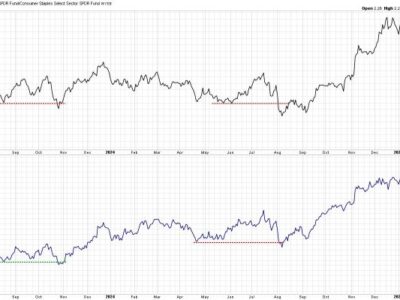
In Iowa, Holy Family Catholic Schools announced that they would be raising prices 10 to 40 percent, depending on a families’ relationship to the parish, given the state’s new education savings account program. In Florida, St. Paul Catholic School announced an increase in tuition for parish members from $6,000 to $10,000, and from $7,000 to $12,000 for nonmembers. Both generated consternation from school choice opponents, who decried “gouging” and a “cash grab.”
Concern about aid translating into skyrocketing prices is well founded—just look at higher education. It is not, however, a serious problem at the moment. Indeed, to have a private sector that can survive against public schools, much less compete on a level financial playing field, schools must be able to raise prices.
As seen in the chart below, which compares private school tuition from the 2022–23 school year to the latest federal data, adjusted to 2022 dollars, on total public school per‐pupil spending, private schools charge much less per pupil than public schools spend. Nationally, average private school tuition is about $12,300 and per‐pupil public school spending is around $17,800. That’s a $5,500, or 45 percent, difference. At the state level, other than three New England states long home to some of the country’s most exclusive, and pricey, private schools, average private school tuition is consistently lower than what public schools spend. Among the states with greater public‐school spending than private tuition, the difference ranges from roughly $800 in Utah to $15,500 in Alaska.
The orange bars denote states that have recently passed universal school choice programs, which have prompted the latest fears. In those states, private school tuition is typically well below public school per‐pupil spending. In Florida, public school spending is roughly $13,400 and private tuition $9,900. Even at the peak price of $12,000, St. Paul won’t match average public‐school spending. In Iowa, public schools spend roughly $16,600 while average private school tuition is just $5,500. Holy Family is only raising its tuition for members of supporting parishes to around $5,010, from $3,580.
Private schools often have other sources of income than tuition, including donations from benefactors and, for many religious schools, church collections, so the money they get from tuition is not all that they have. Holy Family, for instance, says it will charge a maximum tuition of $8,600 for high school but spend $10,600 per student. On the flip side, private schools also sometimes provide financial aid, and except where vouchers or ESAs exist, all of that funding is voluntary, not taken ultimately by force like the vast majority of public‐school money. And public schools also get some charitable support, boosting their revenue, nationally, 1.2 percent.
As Quakers in New Jersey noted when the state ended revenue sharing among public and private schools in 1866, the only way for their schools to hope to survive was to charge low prices and provide the best quality possible. The former, to try to compete against “free” financially, and the latter to make the schools sufficiently attractive to justify families paying twice for education—once in taxes, a second time in tuition. Many did not successfully thread that very narrow needle.
Subsidies fueling price inflation is a serious concern. But right now, many private schools are much closer to extinction than cash‐hoarding. Their raising prices just begins to level the steeply slanted playing field on which they’ve been forced to contend.








